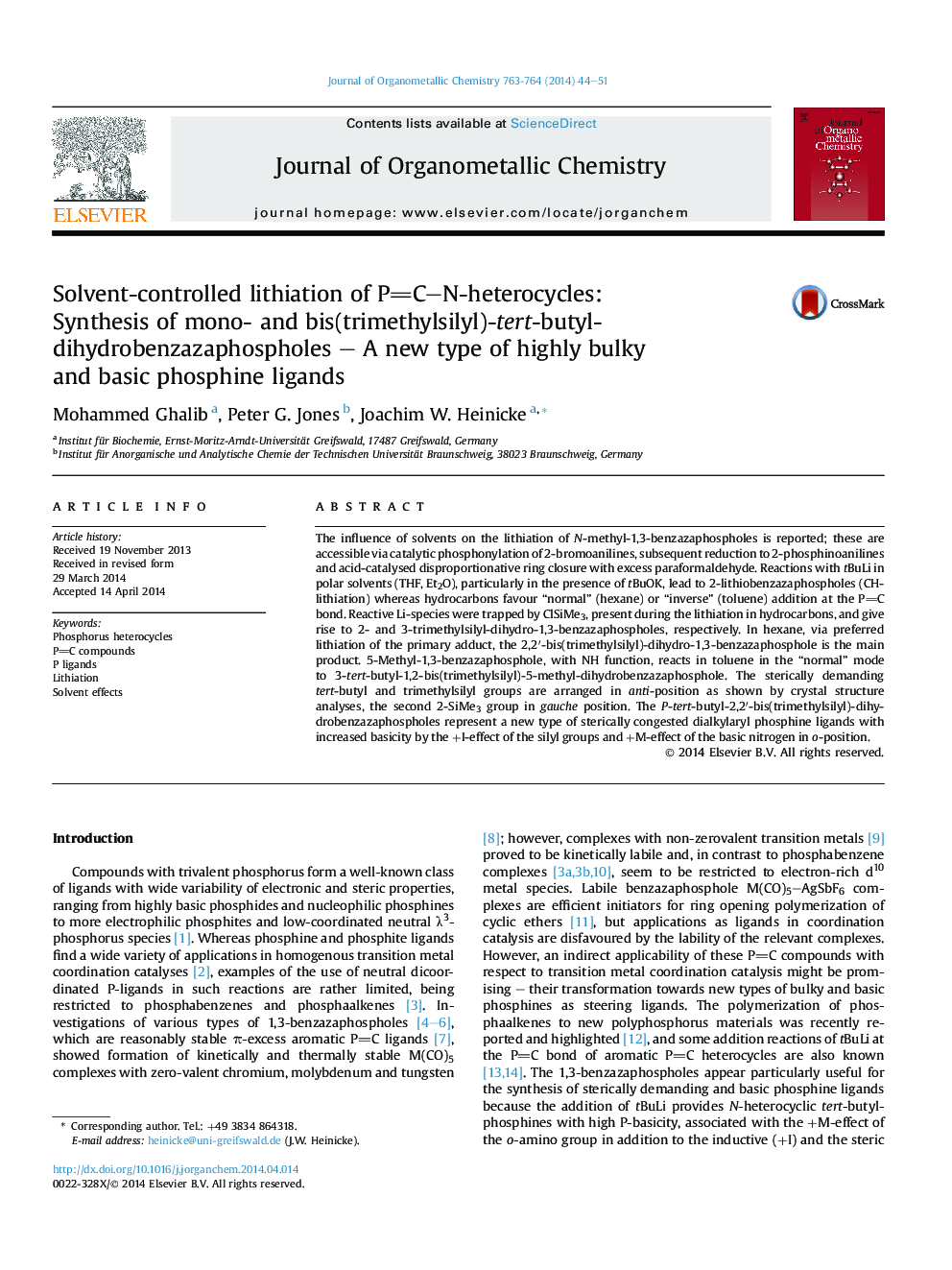| Article ID | Journal | Published Year | Pages | File Type |
|---|---|---|---|---|
| 1323979 | Journal of Organometallic Chemistry | 2014 | 8 Pages |
•The reactivity of tBuLi towards aromatic –PCH–N-heterocycles is solvent-controlled.•Selective CH-lithiation at –PCH–NMe– species is achieved in THF or Et2O/KOtBu.•In hexane sterically congested tBuP-C(SiMe3)2-NMe ligands are formed with excess tBuLi/ClSiMe3.•In toluene tBuLi/ClSiMe3 react with –PCH–NMe– preferably to –Me3SiP-CHtBu-NMe species.•tBuLi/ClSiMe3 and –PCH–NH– give preferably –tBuP-CH(SiMe3)-N(SiMe3) species.
The influence of solvents on the lithiation of N-methyl-1,3-benzazaphospholes is reported; these are accessible via catalytic phosphonylation of 2-bromoanilines, subsequent reduction to 2-phosphinoanilines and acid-catalysed disproportionative ring closure with excess paraformaldehyde. Reactions with tBuLi in polar solvents (THF, Et2O), particularly in the presence of tBuOK, lead to 2-lithiobenzazaphospholes (CH-lithiation) whereas hydrocarbons favour “normal” (hexane) or “inverse” (toluene) addition at the PC bond. Reactive Li-species were trapped by ClSiMe3, present during the lithiation in hydrocarbons, and give rise to 2- and 3-trimethylsilyl-dihydro-1,3-benzazaphospholes, respectively. In hexane, via preferred lithiation of the primary adduct, the 2,2′-bis(trimethylsilyl)-dihydro-1,3-benzazaphosphole is the main product. 5-Methyl-1,3-benzazaphosphole, with NH function, reacts in toluene in the “normal” mode to 3-tert-butyl-1,2-bis(trimethylsilyl)-5-methyl-dihydrobenzazaphosphole. The sterically demanding tert-butyl and trimethylsilyl groups are arranged in anti-position as shown by crystal structure analyses, the second 2-SiMe3 group in gauche position. The P-tert-butyl-2,2′-bis(trimethylsilyl)-dihydrobenzazaphospholes represent a new type of sterically congested dialkylaryl phosphine ligands with increased basicity by the +I-effect of the silyl groups and +M-effect of the basic nitrogen in o-position.
Graphical abstracttBuLi reacts with aromatic –PCH–N-heterocycles dependent on solvent and additives by CH-lithiation and/or normal or invers addition at the PC bond.x.Figure optionsDownload full-size imageDownload as PowerPoint slide
